0 to 5 volts output pressure transducers with amplified signal conditioning electronics and 3 or 4 wire configuration for generating a 0-5Vdc analog signal which corresponds to a specified pressure range.
Products
 DPS300 User Switchable Pressure Range, Volts or Current Output Low DP Sensor - The DPS 300 is a low range HVAC differential pressure sensor. The lowest possible pressure range is 0...100 pascals. 2 or 3 switchable pressure ranges, plus volts or current output are included with most standard configurations.
DPS300 User Switchable Pressure Range, Volts or Current Output Low DP Sensor - The DPS 300 is a low range HVAC differential pressure sensor. The lowest possible pressure range is 0...100 pascals. 2 or 3 switchable pressure ranges, plus volts or current output are included with most standard configurations.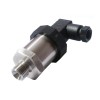 IMPLR Low Range All Stainless Steel OEM Pressure Sensor - Low cost sensor for measuring small pressure ranges from 0-50 mbar (10 inH2O) to 0-1000 mbar (15 psi) of liquids or gases.
IMPLR Low Range All Stainless Steel OEM Pressure Sensor - Low cost sensor for measuring small pressure ranges from 0-50 mbar (10 inH2O) to 0-1000 mbar (15 psi) of liquids or gases.
 TPSA Precision High Pressure Transducer
TPSA Precision High Pressure Transducer IMP Low Cost Pressure Sensor
IMP Low Cost Pressure Sensor SSPT Subsea Wet-Mateable Electrical Connector Pressure Sensor
SSPT Subsea Wet-Mateable Electrical Connector Pressure Sensor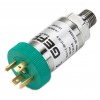 TK Industrial Pressure Transmitter
TK Industrial Pressure Transmitter
Applications
 20 kg/cm² range 5Vdc output pressure transducer for potable water - Potable water pressure transducer with a 0 to 5 volts output and 0 to 20 kg/cm² absolute pressure range
20 kg/cm² range 5Vdc output pressure transducer for potable water - Potable water pressure transducer with a 0 to 5 volts output and 0 to 20 kg/cm² absolute pressure range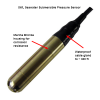 300 foot sea depth waterproof pressure sensor with 0-5V signal - Waterproof submersible pressure sensor for lowering to ~300 feet below sea level.
300 foot sea depth waterproof pressure sensor with 0-5V signal - Waterproof submersible pressure sensor for lowering to ~300 feet below sea level.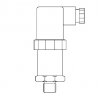 -0.5 to +0.5 bar gauge 0-5 volts output compound range pressure sensor - OEM compound low range gauge pressure sensor with semiconductor strain gauges for measuring over a -0.5 to +0.5 bar gauge pressure range and generating a 0 to 5 volts output signal.
-0.5 to +0.5 bar gauge 0-5 volts output compound range pressure sensor - OEM compound low range gauge pressure sensor with semiconductor strain gauges for measuring over a -0.5 to +0.5 bar gauge pressure range and generating a 0 to 5 volts output signal. -5 to +5 psig bidirectional low range 0-5 volts output pressure sensor - Economical bidirectional low range stainless steel diaphragm pressure sensor with semiconductor strain gauges for measuring over a -5 to +5 psig psi gauge pressure range and generating a 0 to 5 volts output signal.
-5 to +5 psig bidirectional low range 0-5 volts output pressure sensor - Economical bidirectional low range stainless steel diaphragm pressure sensor with semiconductor strain gauges for measuring over a -5 to +5 psig psi gauge pressure range and generating a 0 to 5 volts output signal.
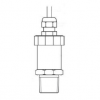 10000 psig range 0-5Vdc output mineral oil high pressure sensor for hydraulic cylinder use
10000 psig range 0-5Vdc output mineral oil high pressure sensor for hydraulic cylinder use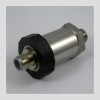 5000 psig range 0-5Vdc output mineral oil pressure sensor for hydraulic control use
5000 psig range 0-5Vdc output mineral oil pressure sensor for hydraulic control use 15psig 0-5Vdc out air gasoline mixture pressure sensor for automotive supercharger booster testing
15psig 0-5Vdc out air gasoline mixture pressure sensor for automotive supercharger booster testing 7 bar gauge range 0 to 5 volts output ceramic diaphragm pressure sensor
7 bar gauge range 0 to 5 volts output ceramic diaphragm pressure sensor 300barg low volts power supply 0-5Vdc output pressure sensor for air compression use
300barg low volts power supply 0-5Vdc output pressure sensor for air compression use Duplex steel 1500psig 0-5V output seawater pressure sensor for water treatment use
Duplex steel 1500psig 0-5V output seawater pressure sensor for water treatment use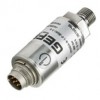 15000 psig range 0-5Vdc output freshwater pressure sensor for waterjet cutting research use
15000 psig range 0-5Vdc output freshwater pressure sensor for waterjet cutting research use 500-1100 mbar absolute range 0-5 volts output barometric pressure sensor
500-1100 mbar absolute range 0-5 volts output barometric pressure sensor
- 4 barg range 0-5Vdc output hi-temp humidified gas pressure sensor for research use
- 10 kPa g range 0-5Vdc output submersible freshwater pressure sensor for water treatment use
- 100mbar dp range 0-5Vdc amplified output air pressure sensor for aerospace research test rig use
- 35 psi g range 0-5Vdc output air pressure sensor for leak testing use
- 250 bar gauge range 0 to 5 volts output ceramic diaphragm pressure sensor
- 2 bar gauge range 0-5 volts output ceramic diaphragm air pressure sensor
- 50 barg oxygen cleaned high temperature 0-5V output pressure sensor
- 3 MPa absolute range 0-5Vdc output nitrogen gas pressure sensor for aerospace testing use
- 50 psi absolute 0-5Vdc output natural gas pressure sensor for boiler control use
- 100 mbar gauge range 0-5 volts output stainless steel pressure sensor
- Automotive brake system 2500 psig range 0-5Vdc output synthetic hydraulic oil pressure sensor
- Standby generator 20inH2Og range 0-5Vdc output natural gas and propane pressure sensor
Product Help
Checklist for 0 to 5 volts output pressure transducer requirements
Define your 0-5V output signal pressure transducer requirements using this checklist:
- Pressure range?
- Output signal? 0-5 volts
- Accuracy?
- Electrical connection?
- Process connection?
- Process media type?
